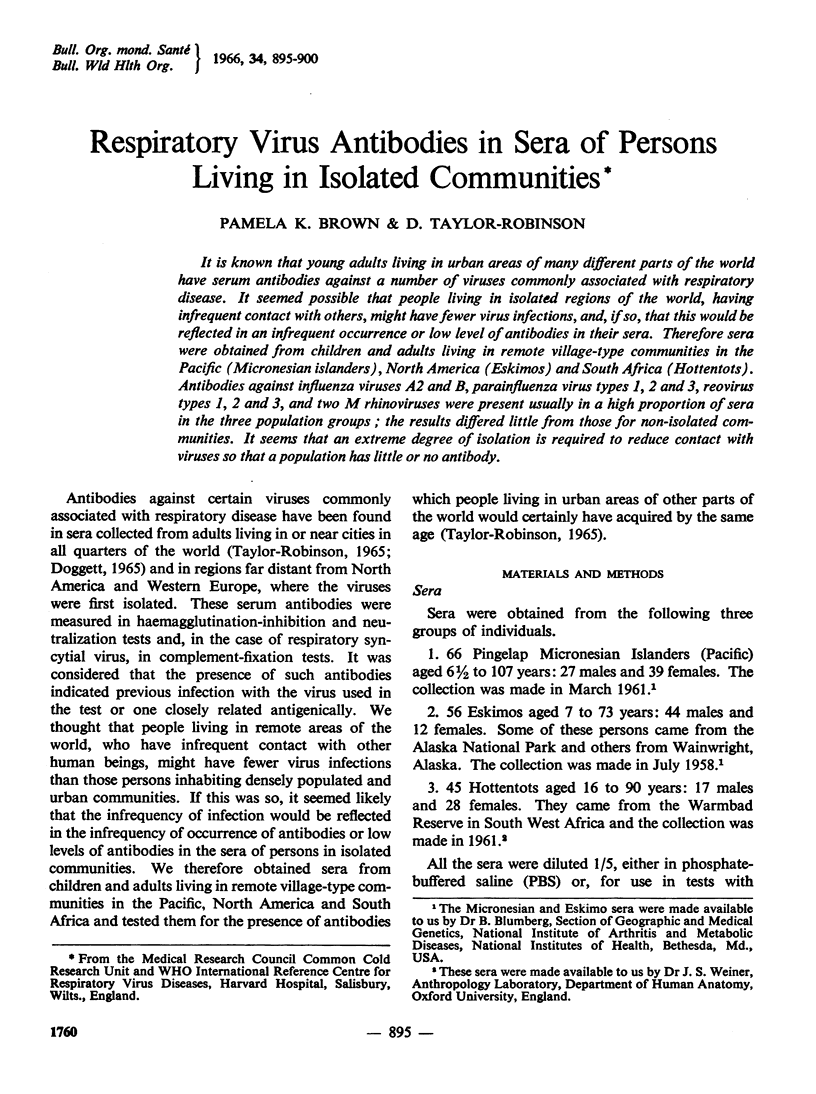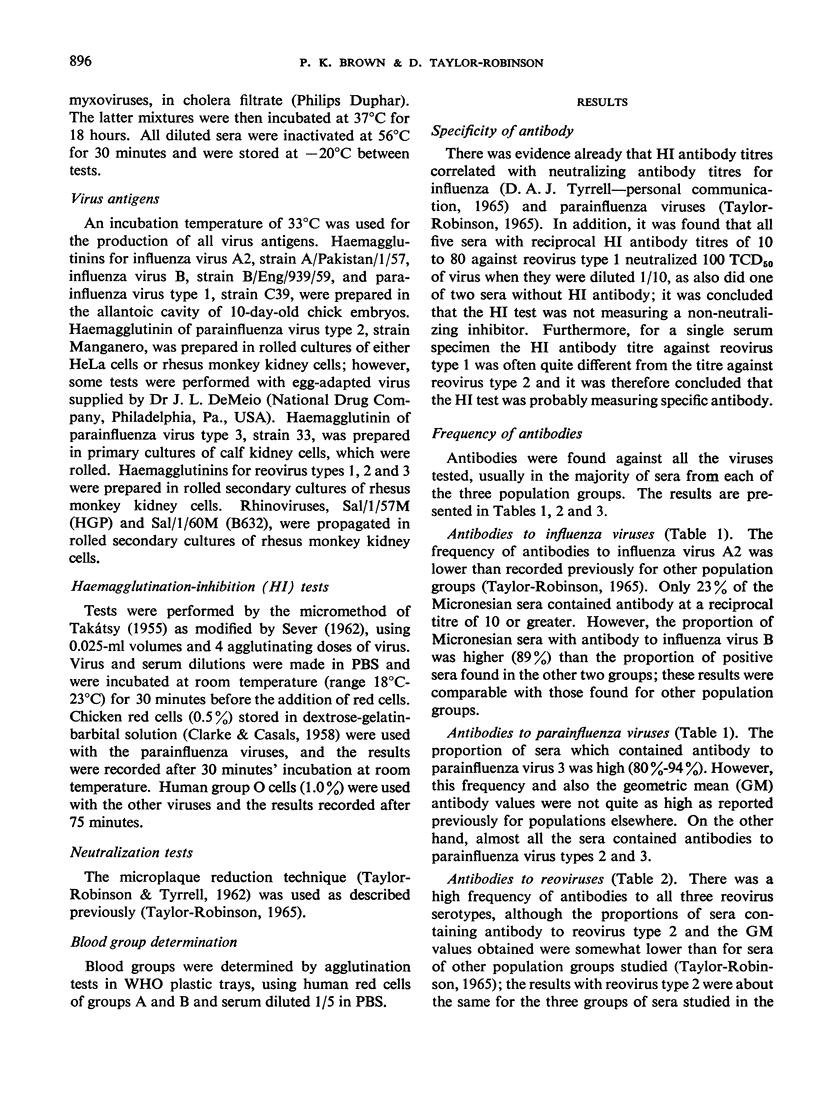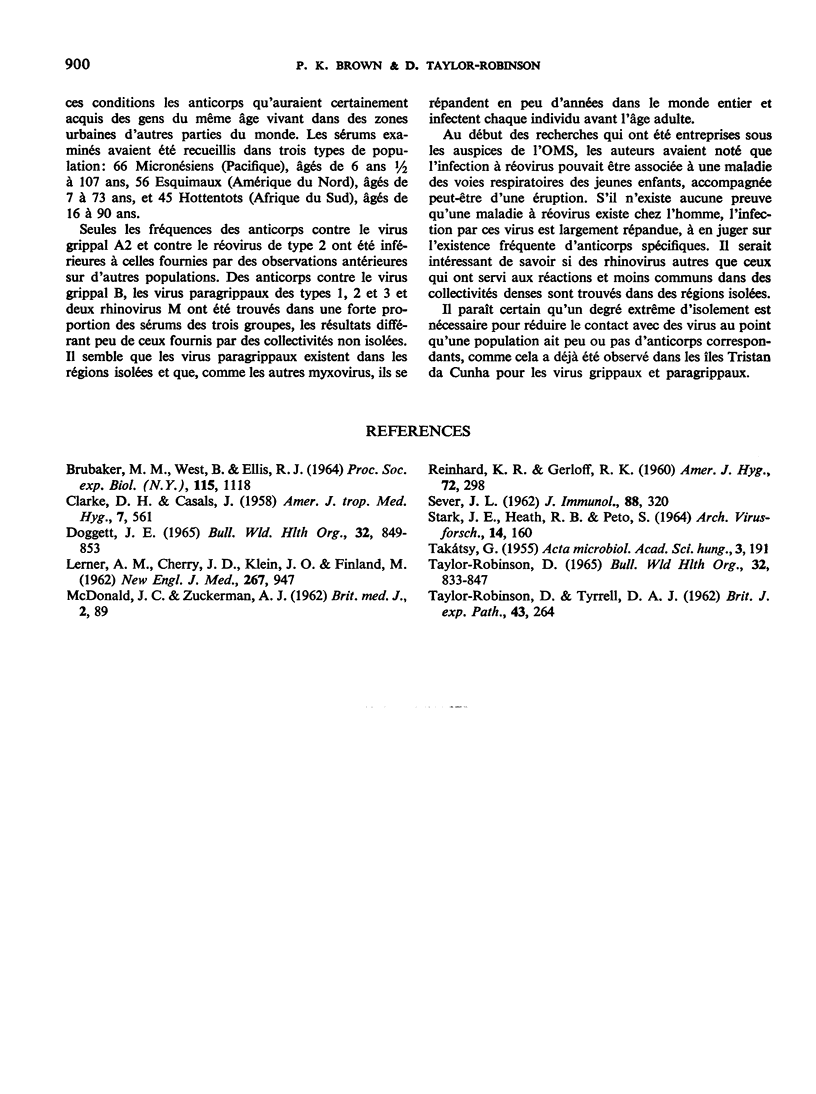Abstract
It is known that young adults living in urban areas of many different parts of the world have serum antibodies against a number of viruses commonly associated with respiratory disease. It seemed possible that people living in isolated regions of the world, having infrequent contact with others, might have fewer virus infections, and, if so, that this would be reflected in an infrequent occurrence or low level of antibodies in their sera. Therefore sera were obtained from children and adults living in remote village-type communities in the Pacific (Micronesian islanders), North America (Eskimos) and South Africa (Hottentots). Antibodies against influenza viruses A2 and B, parainfluenza virus types 1, 2 and 3, reovirus types 1, 2 and 3, and two M rhinoviruses were present usually in a high proportion of sera in the three population groups; the results differed little from those for non-isolated communities. It seems that an extreme degree of isolation is required to reduce contact with viruses so that a population has little or no antibody.
Full text
PDF





Selected References
These references are in PubMed. This may not be the complete list of references from this article.
- BRUBAKER M. M., WEST B., EILLIS R. J. HUMAN BLOOD GROUP INFLUENCE ON REOVIRUS HEMAGGLUTINATION TITERS. Proc Soc Exp Biol Med. 1964 Apr;115:1118–1120. doi: 10.3181/00379727-115-29130. [DOI] [PubMed] [Google Scholar]
- CLARKE D. H., CASALS J. Techniques for hemagglutination and hemagglutination-inhibition with arthropod-borne viruses. Am J Trop Med Hyg. 1958 Sep;7(5):561–573. doi: 10.4269/ajtmh.1958.7.561. [DOI] [PubMed] [Google Scholar]
- Doggett J. E. Antibodies to respiratory syncytial virus in human sera from different regions of the world. Bull World Health Organ. 1965;32(6):849–853. [PMC free article] [PubMed] [Google Scholar]
- LERNER A. M., CHERRY J. D., KLEIN J. O., FINLAND M. Infections with reoviruses. N Engl J Med. 1962 Nov 8;267:947–952. doi: 10.1056/NEJM196211082671901. [DOI] [PubMed] [Google Scholar]
- McDonald J. C., Zuckerman A. J. ABO Blood Groups and Acute Respiratory Virus Disease. Br Med J. 1962 Jul 14;2(5297):89–90. doi: 10.1136/bmj.2.5297.89. [DOI] [PMC free article] [PubMed] [Google Scholar]
- SEVER J. L. Application of a microtechnique to viral serological investigations. J Immunol. 1962 Mar;88:320–329. [PubMed] [Google Scholar]
- STARK J. E., HEATH R. B., PETO S. A STUDY OF THE ANTIBODIES AGAINST PARAINFLUENZA VIRUSES IN CHILDRENS' SERA. Arch Gesamte Virusforsch. 1964;14:160–168. doi: 10.1007/BF01555088. [DOI] [PubMed] [Google Scholar]
- TAKATSY G. The use of spiral loops in serological and virological micro-methods. Acta Microbiol Acad Sci Hung. 1955;3(1-2):191–202. [PubMed] [Google Scholar]
- TAYLOR-ROBINSON D., TYRRELL D. A. Serological studies on some viruses isolated from common colds (rhinoviruses). Br J Exp Pathol. 1962 Jun;43:264–275. [PMC free article] [PubMed] [Google Scholar]
- Taylor-Robinson D. Respiratory virus antibodies in human sera from different regions of the world. Bull World Health Organ. 1965;32(6):833–847. [PMC free article] [PubMed] [Google Scholar]


